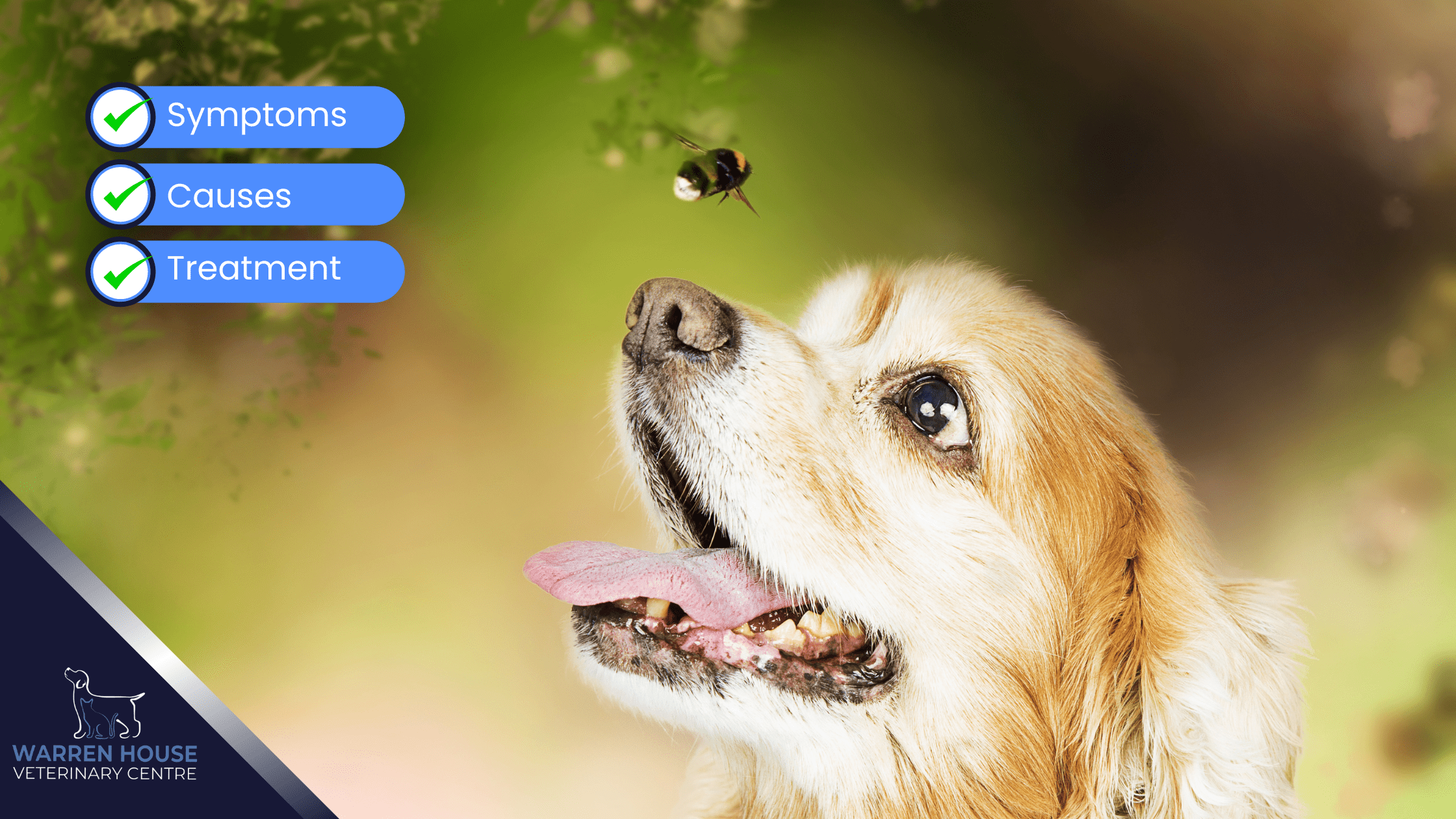As summer arrives, so does the increase in outdoor activities for both pets and their owners. While enjoying the sunshine and fresh air, it’s essential to be aware of the potential dangers that insect stings and bites can pose to our beloved furry companions.
Here’s what you need to know to keep your pets safe and comfortable this season:
Common Culprits:
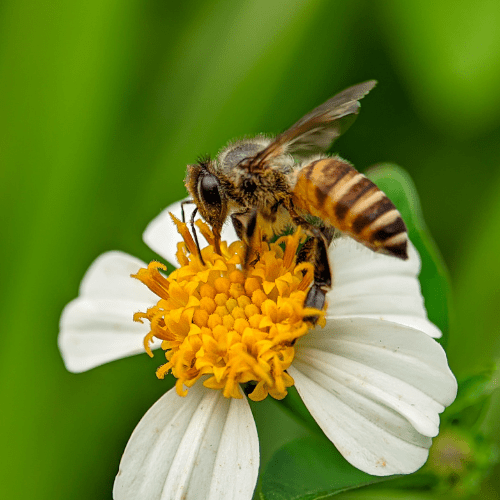
Bees and Wasps
These insects can sting if they feel threatened or when pets inadvertently disturb their nests or feeding areas.
Mosquitoes:
Besides being annoying, mosquitoes can transmit diseases such as heartworm disease to pets through their bites.
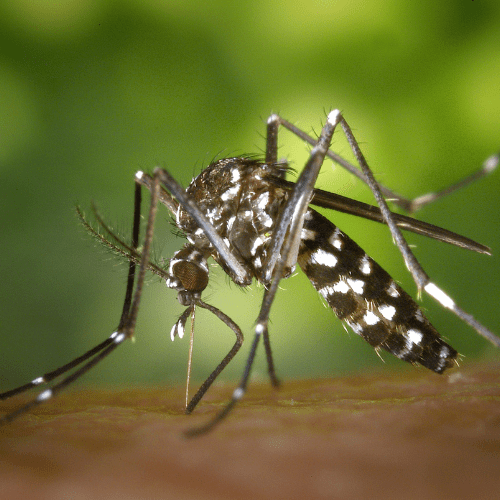
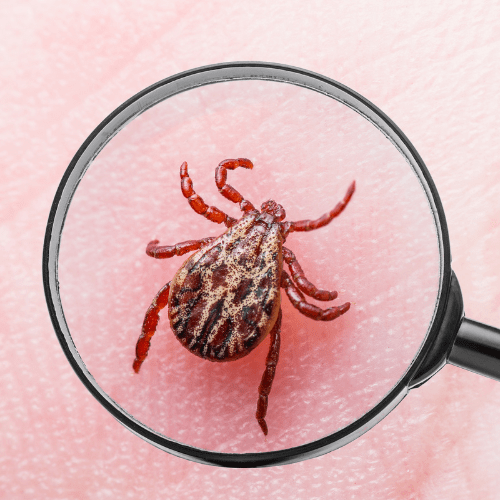
Ticks:
Ticks can latch onto pets and transmit diseases such as Lyme disease and ehrlichiosis.
Fleas:
Flea bites not only cause itching and discomfort but can also lead to flea allergy dermatitis in sensitive pets.
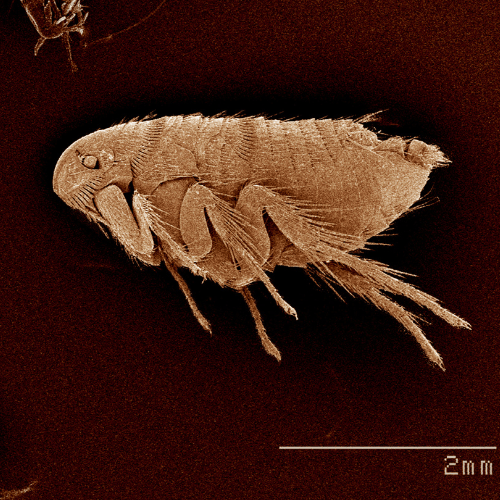
Signs and Symptoms
Localised Reactions:
- Redness and Swelling: The area around the bite or sting may become red and swollen.
- Pain and Tenderness: Your pet might show signs of pain, such as flinching or pulling away when the area is touched.
- Licking or Scratching: The pet may excessively lick or scratch the affected area.
- Raised Bumps or Hives: Small, raised bumps or hives might appear around the site of the bite or sting.
Allergic Reactions
- Itching: Intense itching can cause your pet to scratch or groom excessively.
- Swelling: More severe swelling can occur, especially around the face, neck, and throat, which might lead to breathing difficulties.
- Hives: Raised, red welts can develop on the skin.
- Vomiting or diarrhoea: Some pets may have gastrointestinal symptoms as part of an allergic reaction.
- Difficulty Breathing: In severe cases, the pet may have trouble breathing, which is a medical emergency.
Systemic Reactions:
- Lethargy: Your pet might become unusually tired or less active.
- Loss of Appetite: A sudden decrease in appetite can be a sign of systemic reaction.
- Drooling: Excessive drooling can occur in response to pain or an allergic reaction.
- Pale Gums: Pale gums can indicate a severe allergic reaction or shock.
- Collapse: In extreme cases, a severe allergic reaction can cause collapse or shock.
Infection Signs:
- Warmth: The area around the bite or sting may feel warmer than the surrounding skin.
- Pus or Discharge: An infected bite or sting may ooze pus or other discharge.
- Fever: A secondary infection can lead to a fever, making the pet feel unwell overall.
Steps to Protect Your Pets

Prevention:
Minimise your pet’s exposure to insects by keeping them indoors during peak mosquito activity times (usually dawn and dusk), and avoiding areas known to harbour ticks and fleas. Use pet-safe insect repellents as recommended by your veterinarian.
Regular Check-ups:
Perform routine inspections of your pet’s fur and skin, especially after outdoor activities. Look for ticks or signs of flea infestation.


Immediate Care
If your pet gets stung, gently remove the stinger if visible (in the case of bees), clean the area with mild soap and water, and apply a cold compress to reduce swelling. Monitor for any signs of allergic reactions and seek veterinary care promptly if needed.
Environmental Control
Keep your yard well-maintained to reduce habitats for insects, such as trimming tall grass and bushes where ticks may reside.


Heartworm Prevention
Ensure your pet is on a regular heartworm prevention programme as recommended by your veterinarian, especially in regions where mosquitoes are prevalent.
When to Seek Veterinary Care
Always consult your veterinarian if your pet experiences:
- Severe swelling or multiple stings/bites
- Difficulty breathing
- Signs of an allergic reaction (hives, vomiting, collapse)
- Continued pain or discomfort despite initial care
By being proactive and aware of potential risks, you can help ensure a safe and enjoyable summer for your pets. Remember, their health and well-being are worth the extra effort in preventive care and prompt treatment when needed. Enjoy the season with your furry friends responsibly!
Stay informed. Stay safe. Keep your pets protected.
We hope you found this blog useful, Until next time…

